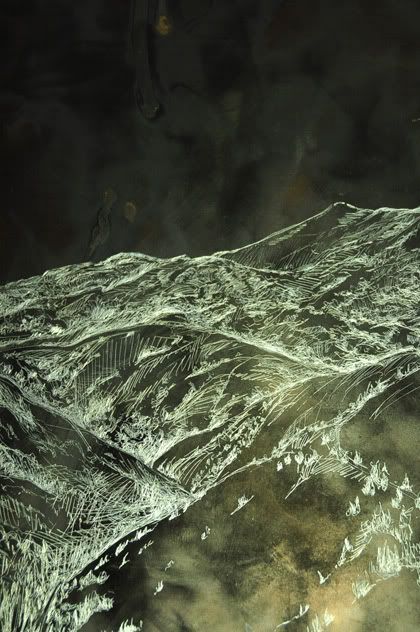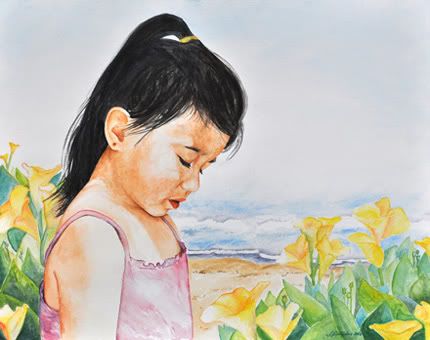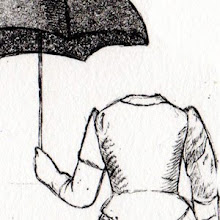What is "Smoking the plate"?
It is darkening the surface of the hard ground-covered-plate using smoke from a flame.
Why smoke the plate?
This isn't a necessary part of the etching process but it can help in two ways. (1) The much darker surface means you can very easily see the lines you have drawn into the ground, and (2) It can serve to cover up any small holes you have left in the ground, if for some reason you didn't roll it on very well.
And how?
After applying the hard ground, take a pair of pliers with which to hold onto the plate. You need this because it'll heat up and you'll burn your hands otherwise. Hold it upside down (hard ground side down) over a flame and move it around.
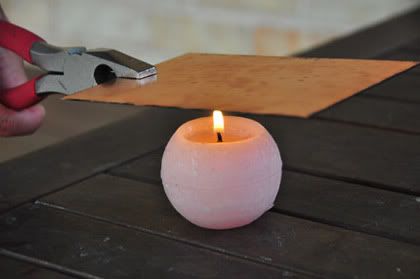
Be careful:
• NOT to hold it in any one spot for too long.
• NOT to scratch the plate with the pliers. If you take some ground off, just cover it with bitumen after you're finished drawing.
It tends to work better if you have lots of little candles (unlike what I have in the photo), and light a few of them to get a wider flame.
A smoked plate:
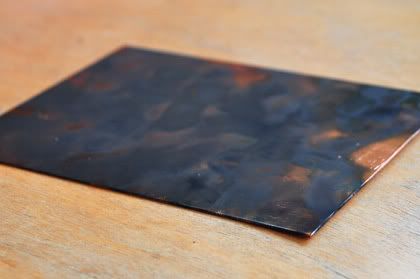
A drawing on a smoked plate:
